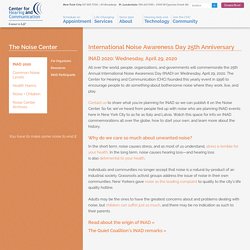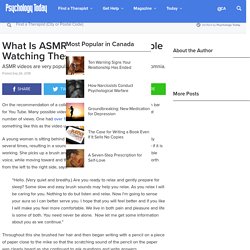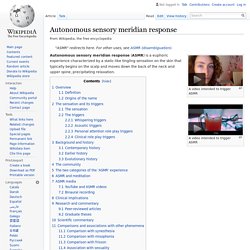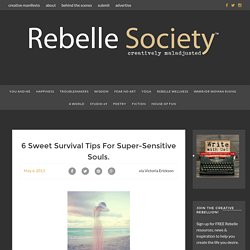

Proprioception, the True Sixth Sense. International Noise Awareness Day 20th anniversary. INAD 2020: Wednesday, April 29, 2020 All over the world, people, organizations, and governments will commemorate the 25th Annual International Noise Awareness Day (INAD) on Wednesday, April 29, 2020.

The Center for Hearing and Communication (CHC) founded this yearly event in 1996 to encourage people to do something about bothersome noise where they work, live, and play. Contact us to share what you’re planning for INAD so we can publish it on the Noise Center. So far, we’ve heard from people fed up with noise who are planning INAD events here in New York City to as far as Italy and Latvia. Watch this space for info on INAD commemorations all over the globe, how to start your own, and learn more about the history. Why do we care so much about unwanted noise? In the short term, noise causes stress, and as most of us understand, stress is terrible for your health. Individuals and communities no longer accept that noise is a natural by-product of an industrial society. How Spatial Navigation Correlates with Language. Cognitive neuroscientists from the Higher School of Economics and Aarhus University experimentally demonstrate how spatial navigation impacts language comprehension.

The results of the study have been published in NeuroImage. Language is a complicated cognitive function, which is performed not only by local brain modules, but by a distributed network of cortical generators. Physical experience such as movement and spatial motion play an important role in psychological experiences and cognitive function, which is related to how an individual mentally constructs the meaning of a sentence. Nikola Vukovic and Yury Shtyrov carried out an experiment at the HSE Centre for Cognition & Decision Making, which explains the relations between the systems responsible for spatial navigation and language.
Using neurophysiological data, they describe brain mechanisms that support navigation systems use in both spatial and linguistic tasks. What Is ASMR and Why Are People Watching These Videos? On the recommendation of a colleague I put the letters “ASMR” into the search bar for You Tube.

Many possible videos came up. Some of these videos had a great number of views. One had over 15 million! I clicked on the first video and saw something like this as the video unfolded before me: A young woman is sitting behind an old style microphone, which she taps lightly several times, resulting in a sound like that when you test a microphone to see if it is working. “Hello. Article continues after advertisement Throughout this she brushed her hair and then began writing with a pencil on a piece of paper close to the mike so that the scratching sound of the pencil on the paper was clearly heard as she continued to ask questions and write answers.
“Do you want to get more information about how to relax and sleep better? Autonomous sensory meridian response. A video intended to trigger ASMR Autonomous sensory meridian response (ASMR) is a euphoric experience characterized by a static-like tingling sensation on the skin that typically begins on the scalp and moves down the back of the neck and upper spine, precipitating relaxation.

Overview[edit] Definition[edit] Origins of the name[edit] The term 'autonomous sensory meridian response' (ASMR) was coined on 25 February 2010 by Jennifer Allen, a cybersecurity professional residing in New York[3] in the introduction to a Facebook Group she founded entitled the 'ASMR Group'.[4] Prior to the subsequent social consensus that led to what is now the ubiquitous adoption of that term, other names were proposed and discussed at a number of locations including the Steady Health forum, the 'Society of Sensationalists' Yahoo! Allen chose the words intending or assuming them to have the following specific meanings: 6 Sweet Survival Tips for Super Sensitive Souls. “I have sea foam in my veins, for I understandthe language of waves.”~ Le Testament d’Orphee Like most sensitive souls, you already know you’re sensitive.

You soak up others’ moods and desires like a sponge. You absorb sensation the way a paintbrush grasps each color it touches on a palette. The ethereal beauty of a dandelion, the shift of a season, the climax of a song, or the scent of a certain fragrance can sometimes move you to tears. Super sensitive souls like you and I have always been a part of the human landscape, and according to the “Highly Sensitive Person” pioneer Elaine Aron’s research, we make up around 20 percent of the population. It’s important to note that all human beings are actually quite fragile, and Super Sensitive Souls are no more fragile than everyone else — we are just more easily stimulated due to our wiring. Basically this means that if you are sensitive, you have the ability to see colors and feel energy the way others hear jet planes.
“Aliveness is energy. 1. Moving Moments. Music Minds. Thought Patterns.